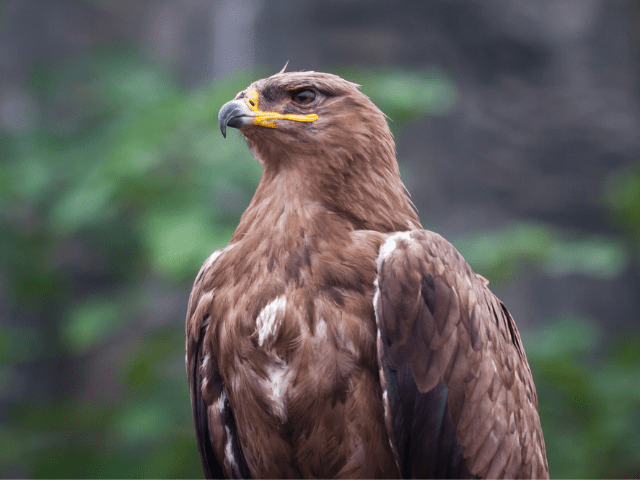If you've looked at pictures of hawks in Missouri for a long time, you need a birding tour soon.
But, before you go...
Let's expound on the species in this state and where to see them.
Some of these birds of prey are very aggressive, even to humans, so learning a thing or two about them prepares you for the trip.
What's more, you'll know whether some Missouri hawks can show up in your backyard. Let's get started!
Missouri Hawk Species: 8 Types To See
1. Northern Goshawk
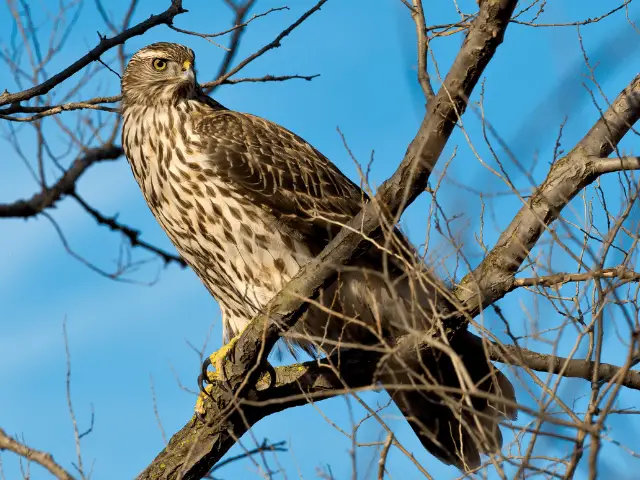
This one will give you an above-average birding experience as it's elusive, so you have to do more legwork.
It inhabits the northern states of the US all year round but lives in the other states as a non-breeding population. The northern goshawks are large birds with a wingspan that extends to 46 inches and 20 to 25 inches in length.
These raptors inhabit deep, mature forests, and they are very protective of their nests. Just stay away.
2. Broad-Winged Hawk
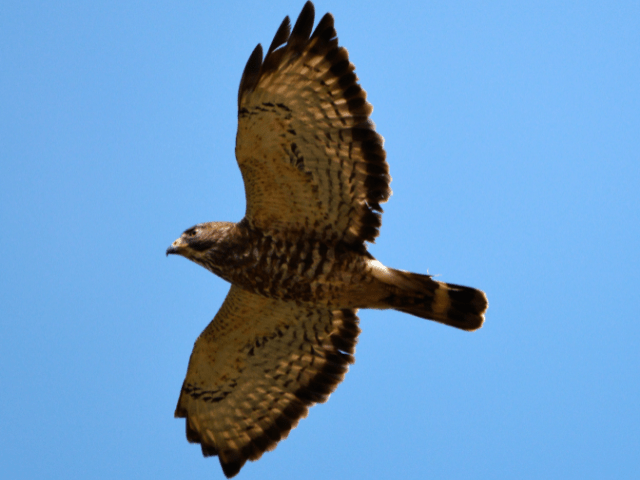
The broad-winged hawk can grow to 16 inches in length with a wingspan of 33 inches, and it's in Missouri for the breeding season only.
The broad-winged hawk migrates to the southern states and South America in winter, and it moves in a large flock. Amusedly, that large flock's collective noun is a kettle. The broad-winged hawk eats small mammals, birds, and insects.
To catch their prey, these birds perch high to scan the area and then pounce on the animal on the ground.
3. Sharp-Shinned Hawk
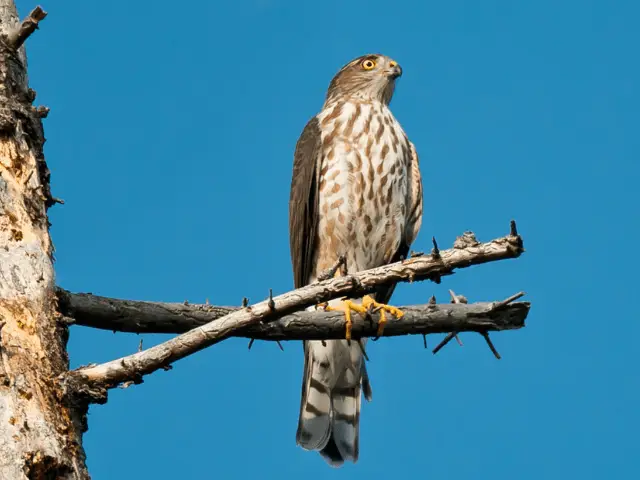
Its plumage is brown, different shades of brown. For instance, you'll notice it has pale brown underparts and dark brown wings.
What does it eat? Mostly, songbirds. It hunts robins and thrushes. Sharp-shinned hawks nest in deep forests, and they aren't very active in the breeding season for fear of predators. Places to see them in MO are numerous, more so in the western region.
Nevertheless, they inhabit the northern states during the breeding season. Luckily, you don't need a birding tour to see them as long as you have a bird feeder. You'll see them there preying on songbirds.
The sharp-shinned hawk resembles cooper's hawk, but the former is smaller than the latter by about 6 inches.
However, since you'll rarely spot them together, the best way to ID them is when you know Missouri hawk sounds. Why? The sharp-shinned hawk makes a Kik-Kik-Kik sound while cooper's hawk fills the forest with Cak-Cak-Cak sounds.
4. Swainson's Hawk
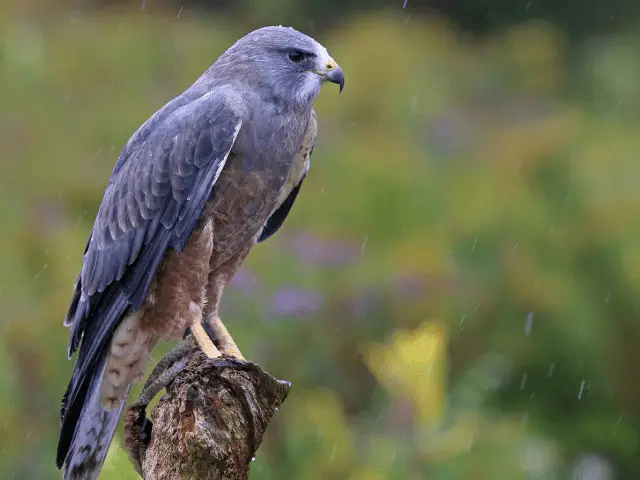
Unlike other elusive hawks that prefer deep forests, Swainson's hawk perches in open lands, on telephone poles and fences.
This bird grows to about 21 inches, and its wingspan comes to about 52 inches. The back feathers have a brown color, while the breast area has a dark chestnut color.
Lastly, its underbelly has a whitish lining with barred wings. Its diet consists of rodents, insects, and birds.
5. Red-shouldered Hawk

The red-shouldered hawk is not a very big bird when you compare it with other hawks of Missouri. It averages 19 inches long with a wingspan of 40 inches. You'll notice its red shoulders when it perches as they are different from its white and black wings.
Its underparts have brown barred feathers. The red-shouldered hawk eats small mammals and amphibians, and it hunts from the air.
It's in Missouri all year round, in the woods where it can watch its prey from above.
6. Cooper's Hawk
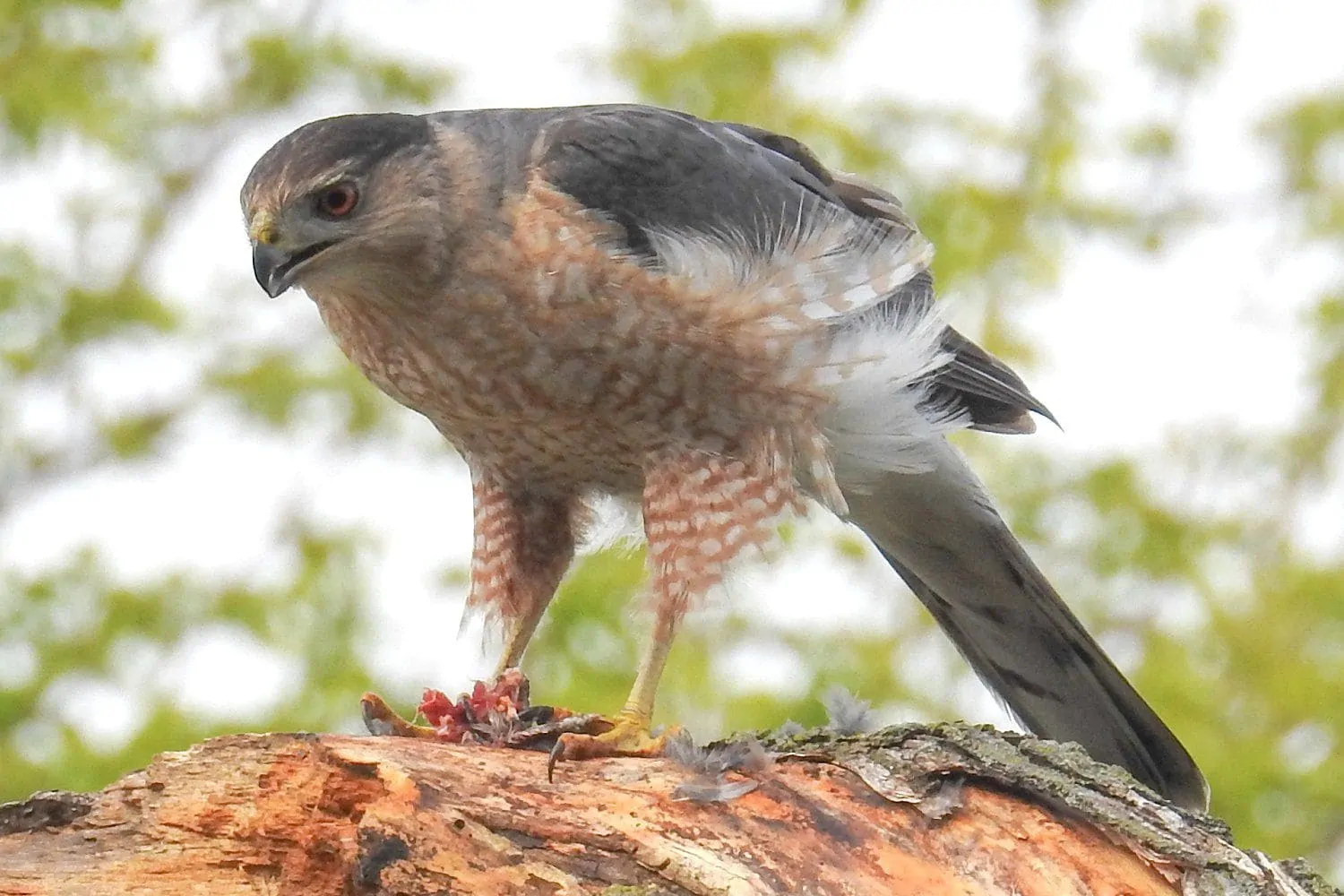
You'll spot this 17-inch bird all year round, especially when you explore woodlands. It may occasionally visit your backyard, too! A cooper's hawk eats birds, and it has excellent flying abilities.
FYI: Cooper's Hawk is likewise seen in Texas for those adventurers and bird watchers who are planning to visit this state.
The male bird builds a nest and gathers most of the food for almost three months before fledging.
7. Red-Tailed Hawk
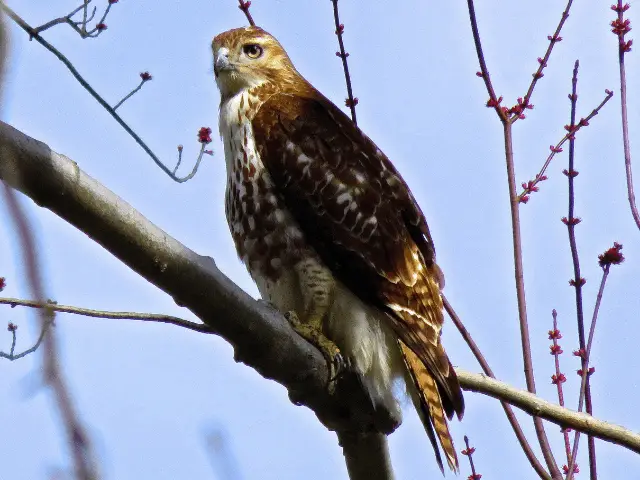
It's a large bird that grows to 22 inches long, flaunting a wingspan of 50 inches. The female hawk is larger than the male raptor, and the tail of the adult hawk has a reddish tail with a black strip near the tip.
In winter, you may spot red-tailed hawks with dark brown to pale brown plumage.
The red-tailed hawk feeds on small animals like rabbits, rats, mice, snakes, and squirrels. That's why it loves perching on telephone poles from where it can watch small animals below.
You'll see this Missouri hawk all year round, and you only need to drive through the countryside or near large highways.
It builds nests in trees with the best view, so look for it in the tallest trees. Plus, it may reuse a nest, so there's a higher chance for you to find it in the same place every breeding season.
FYI: The Red-tailed Hawk could also be seen flying in Ohio and other states, as well!
8. Northern Harrier
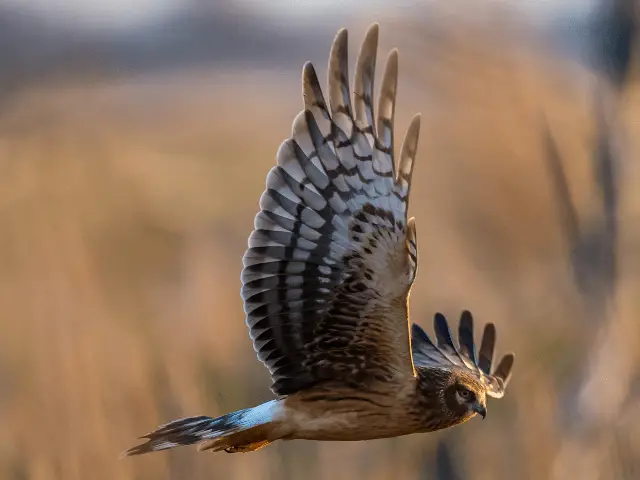
Its length ranges from 18 to 22 inches, while its wingspan is between 40 and 47 inches. This hawk loves insects, small birds, snakes, and rodents. To ID the male and female raptors, look at the wings and the underbelly.
Unlike other birds, the northern harrier nests on the ground.
Where Can You See Missouri Hawks?
Missouri is a wildlife haven with over 90 state parks. Hence, you're not short of exciting birding destinations.
Some of the best birding destinations are:
Squaw Creek National Wildlife Refuge
The northern harrier lives here during winter, and this sanctuary has observation points.
Roaring River State Park
It's in the serene Ozarks region, and you'll spot the broad-winged hawks here during the breeding season.
St. Louis Urban Oasis
Creve Coeur Lake Memorial Park and Tower Grove Park will treat you to a memorable birding tour. The mature hardwood trees there replaced the indigenous vegetation due to urbanization.
However, these forested areas still attract numerous birds, including hawks. Also, visit Meramec Highlands for sightings of red-shouldered hawks.
Here are some other facts about red-shouldered hawks:
Frequently Asked Questions About Hawks In MO
Can You Kill Hawks In Missouri?
No, the law protects these raptors from harm. You'll need a permit to hunt, trap or shoot them.
What Hawks Can Be Seen In Missouri?
You'll see eight species, and they include the red-shouldered hawk, the red-tailed hawk, and the broad-winged hawk, all of them discussed in the section above.
Some inhabit deep forests, while others prey on small animals from telephone poles near highways. Some songbird-loving hawks also hover near bird feeders to prey.
Final Thoughts
Watching hawks is an exciting experience. Some, the ones that watch and pounce on their prey, give thrilling hunts. You'll see such species in MO, like the red-shouldered hawk with its distinct red color and the broad-winged hawk.
This state has both migratory and resident birds, eight species in total. The sharp-shinned hawk will even come to your backyard to hunt songbirds.
Other species prefer deep forests instead of open lands or near human settlements, so you may require a birding tour to see them.

